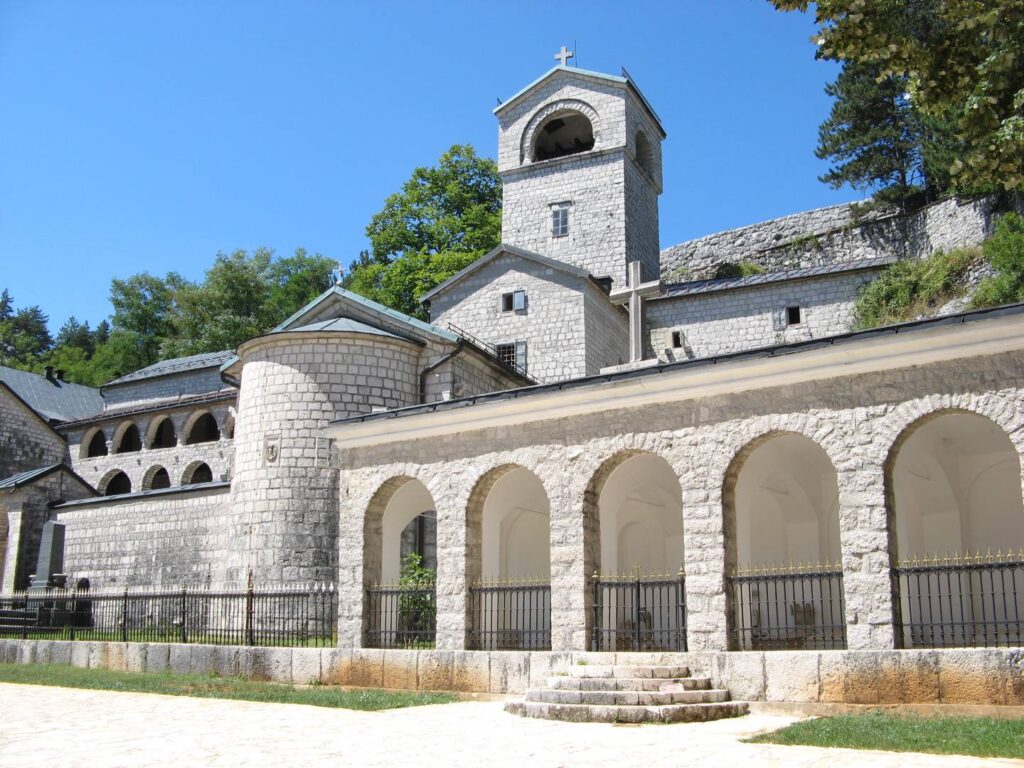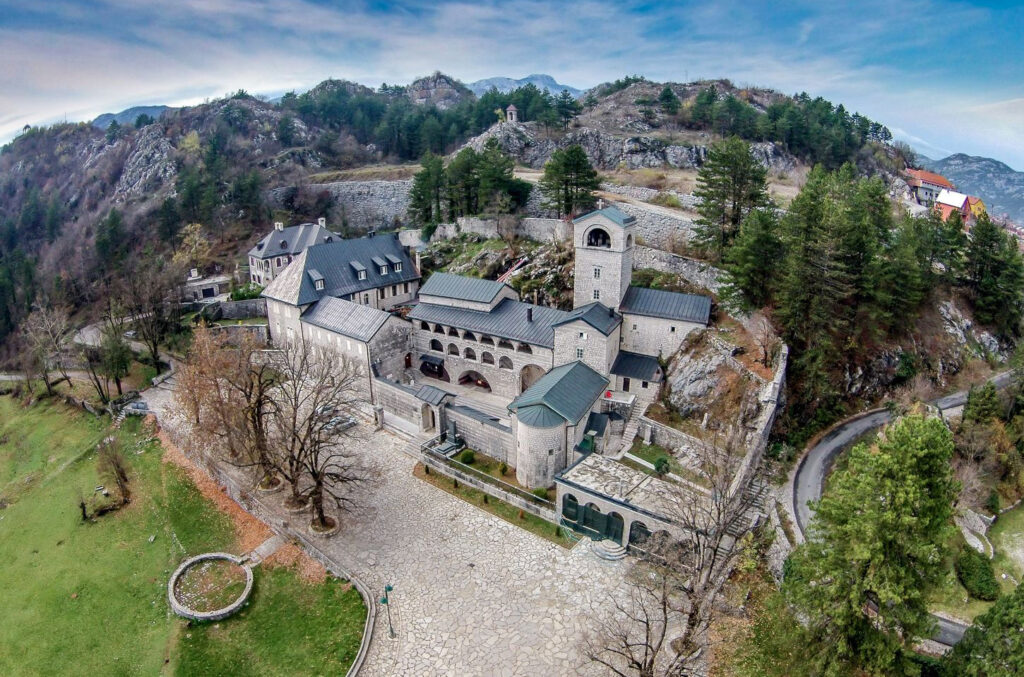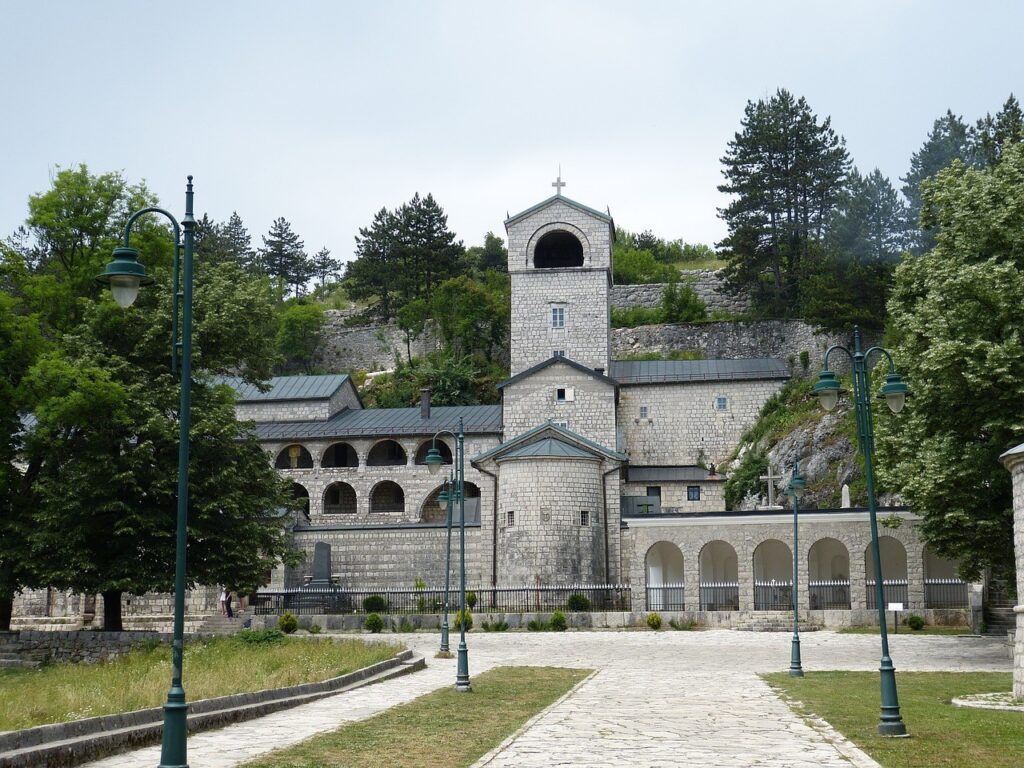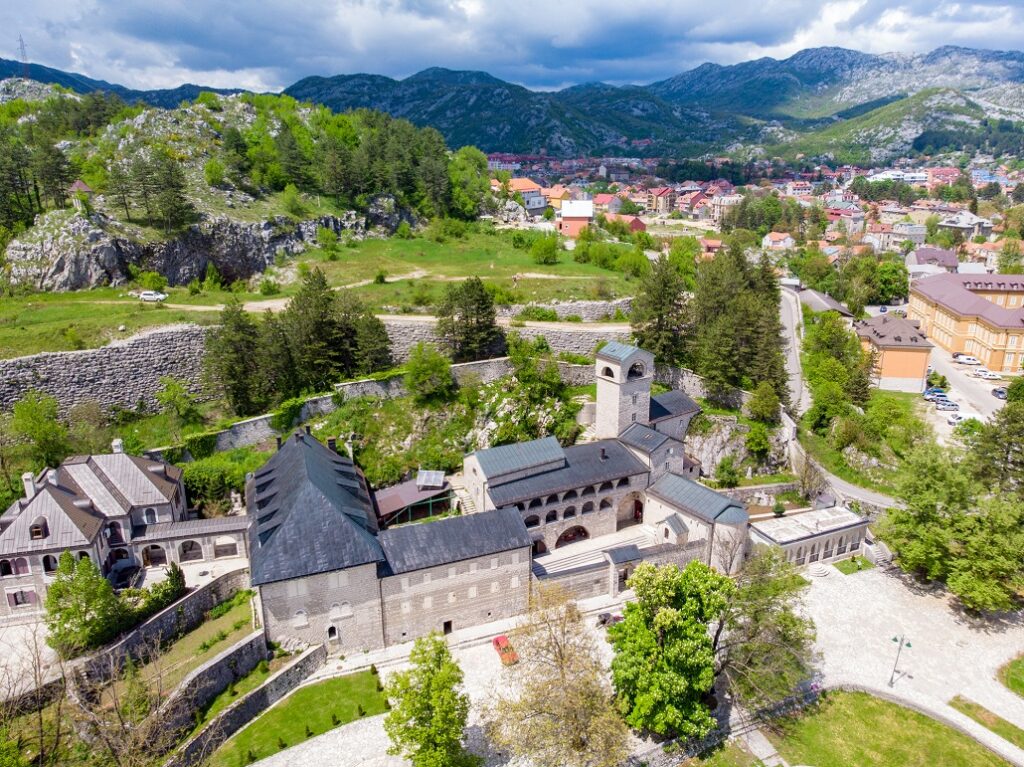Architecture of cetinje monastery
Beyond its historical significance, the Cetinje Monastery is an architectural masterpiece, boasting a blend of Byzantine and Baroque styles. It stands as a testament to the genius of the architects and artisans of yesteryears. Every brick, every carving, and each fresco narrates tales of devotion and artistry. The intricate designs, the majestic domes, and the ornate interiors reflect a confluence of cultures and a dedication to preserving Montenegro’s artistic heritage.
Inside the monastery, one can find a plethora of frescoes that are not just religious depictions but are also historical records. They tell tales from the Bible, showcase local legends, and provide insights into Montenegro’s rich spiritual customs. Over time, these frescoes have attracted attention beyond religious circles. Scholars, historians, and art enthusiasts from around the world flock to witness these masterpieces, which have become a subject of study and admiration.
For the local community and visitors alike, the Cetinje Monastery transcends religious confines. It emerges as a cultural epicenter, celebrating Montenegro’s unique traditions, festivities, and folklore. Its role in nurturing and promoting local art forms, combined with its vast repository of religious icons and artifacts, underscores its unparalleled significance as a cherished spiritual and cultural landmark in the Balkans.

cultural grandeur of cetinje monastery
Beyond its historical significance, the Cetinje Monastery is an architectural masterpiece, boasting a blend of Byzantine and Baroque styles. It stands as a testament to the genius of the architects and artisans of yesteryears. Every brick, every carving, and each fresco narrates tales of devotion and artistry. The intricate designs, the majestic domes, and the ornate interiors reflect a confluence of cultures and a dedication to preserving Montenegro’s artistic heritage.
Inside the monastery, one can find a plethora of frescoes that are not just religious depictions but are also historical records. They tell tales from the Bible, showcase local legends, and provide insights into Montenegro’s rich spiritual customs. Over time, these frescoes have attracted attention beyond religious circles. Scholars, historians, and art enthusiasts from around the world flock to witness these masterpieces, which have become a subject of study and admiration.
For the local community and visitors alike, the Cetinje Monastery transcends religious confines. It emerges as a cultural epicenter, celebrating Montenegro’s unique traditions, festivities, and folklore. Its role in nurturing and promoting local art forms, combined with its vast repository of religious icons and artifacts, underscores its unparalleled significance as a cherished spiritual and cultural landmark in the Balkans.

The Relics of Cetinje Monastery
Stepping into the hallowed grounds of the Cetinje Monastery is akin to embarking on a spiritual journey through Montenegro’s deep-rooted faith traditions. Over the years, the monastery has been a repository of some of the most revered relics and sacred treasures, each with its unique story and significance.
One of the most precious possessions housed in the monastery is the hand of John the Baptist. This relic, steeped in religious lore, has been an object of veneration for countless devotees who travel from far and wide to seek its blessings. Equally significant is the particle of the True Cross, believed by many to be a fragment of the cross upon which Jesus Christ was crucified. The presence of such sacred artifacts makes Cetinje Monastery a veritable epicenter of Christian faith in the region.
But the treasures are not limited to relics alone. The monastery’s library holds a vast collection of ancient manuscripts, liturgical texts, and spiritual writings that have been carefully preserved through the ages. These texts, written by monks and scholars, provide valuable insights into the theological and philosophical discourse of past eras. The very walls of the monastery reverberate with the echoes of prayers, hymns, and spiritual discourses that have been a part of its tradition for centuries.

Cetinje Monastery in Modern Times
In today’s rapidly evolving world, where modernity often overshadows tradition, the Cetinje Monastery stands resilient, reminding Montenegrins of their rich heritage and spiritual lineage. While it remains a major pilgrimage site, its influence extends far beyond religious confines. For many, it symbolizes Montenegro’s national identity, resilience, and the indomitable spirit of its people.
In recent times, efforts have been amplified to preserve the integrity of the monastery and promote it as a symbol of Montenegro’s cultural heritage. Restoration projects, initiated with the support of both national and international agencies, aim to ensure that the architectural splendor and the invaluable treasures within are safeguarded for future generations.
Furthermore, the monastery has adapted to modern times by embracing technology. Digital archives, virtual tours, and interactive exhibits ensure that the younger generation, too, can connect with their roots and understand the significance of the Cetinje Monastery in the larger Montenegrin narrative.
While it stands as a testament to Montenegro’s glorious past, the Cetinje Monastery also points towards a future where faith, tradition, and modernity coexist harmoniously, ensuring that the spiritual and cultural essence of the nation remains undiminished.

